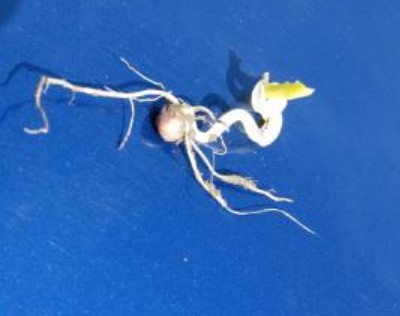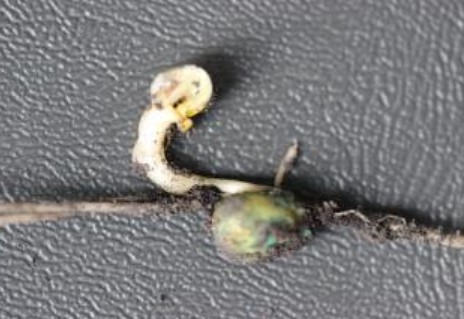By Dr. Mark Licht
Last week planters made progress across portions of Iowa. Rains this weekend and the forecast for the coming week indicate planting will be at a standstill this week. In light of the weekend weather, soil temperatures quickly fell below 50oF. What does this mean for corn and soybean already planted?
Imbibitional chilling occurs when there is a drastic change in the water temperature during imbibition. The critical time for this to occur is within 24 hours of planting. Cold Injury is when there is a change in the soil temperature after the seed has imbibed water. The effects of imbibitional chilling and cold injury are ultimately the same… reduced stand establishment and seedling vigor. Severe imbibitional chilling can result in seed death, ‘corkscrewing’ of the mesocotyl, and leafing out underground as well as surviving seedlings having reduced seedling vigor. Cold injury is typically less severe than imbibitional chilling. Regardless, the impact of a temperature drop is dependent on how big the temperature drop is, how long cold temperatures persist, and what the seed quality was.


At this point, there is nothing that can be done for corn and soybean that have already been planted. If you are curious of the impact that this temperature change made, conduct stand assessments once emergence occurs. There are 3 easy steps;
- Determine what the plant population is. Simply count the number of plants emerged in 1/1000th of an acre (17’5” for 30-inch rows). Knowing your plant population can give you an early indication of yield potential.
- Identify how uniform emergence is. Look to see if all plants evenly spaced within the row. Pay attention to how uniform plant height is to determine how uniform the emergence rate was.
- Evaluate why plants are missing or delayed. Dig along the furrow to find the presence of a seed. If there is no seed, it is likely a planter performance issue. If there is a seed that has died, ‘corkscrewed’, leaf out underground, there is a good likelihood of injury from the cold temperatures. Plants that emerge days later may be the result of deeper seed depth placement or reduced seedling vigor.